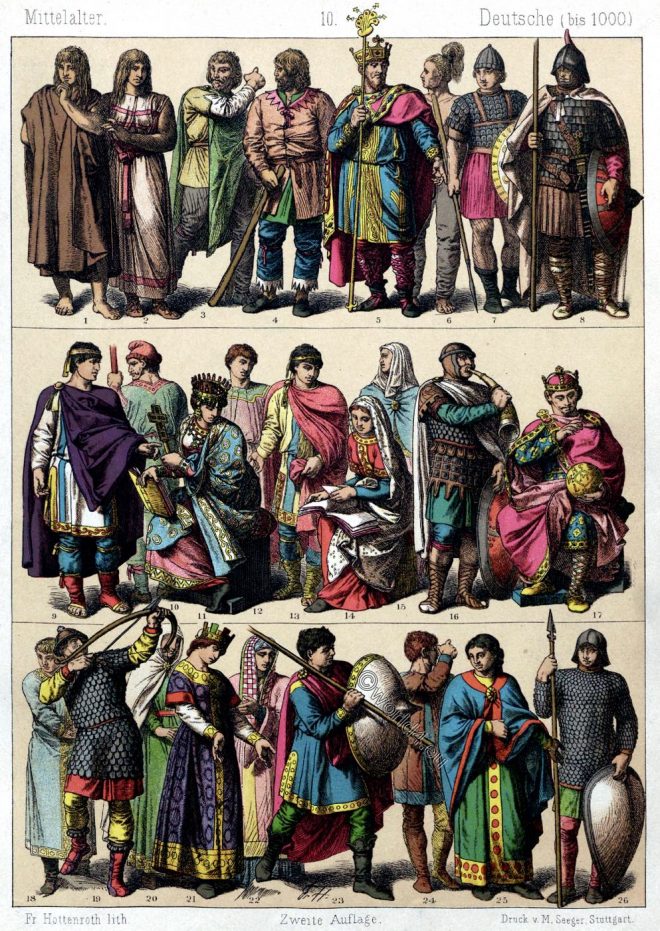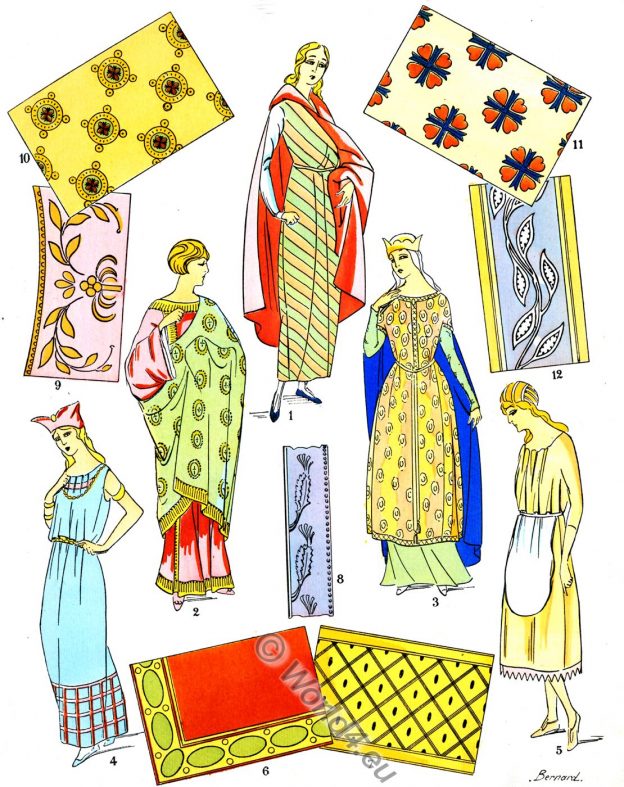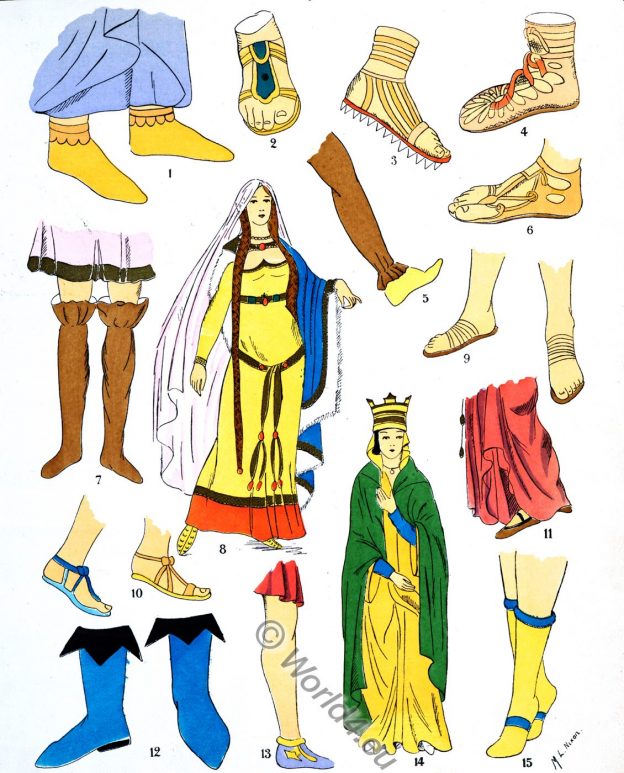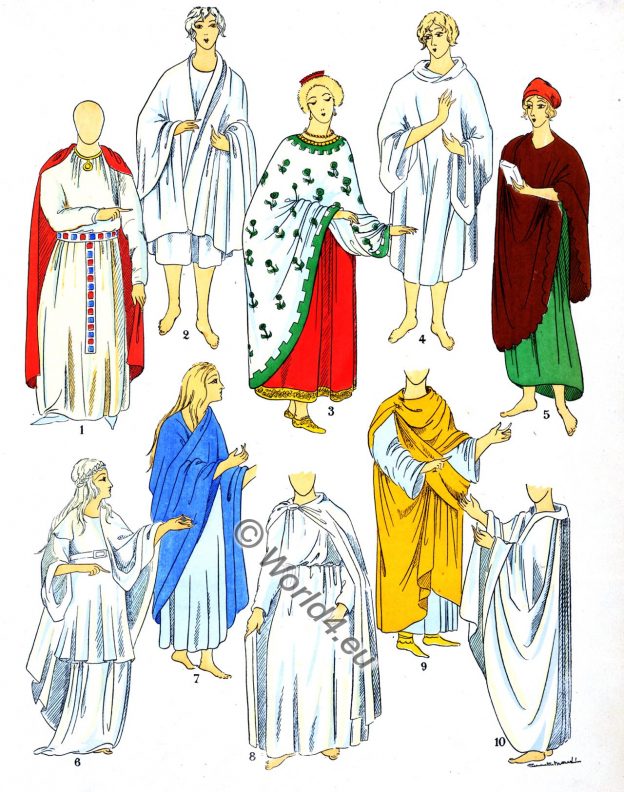Gauls. Male and female types. Gallic chief. Merovingian chief. Frankish warrior with the Scamasax. Farmers. Flag Bearer. Horsemen. Warrior types of the Salian Franks. The bardocucullus. The carnyx, war trumpet.
Tag: Merovingian culture
The Merovingians were the oldest royal dynasty of the Franks from the 5th century to 751. They were succeeded by the dynasty of the Carolingians. The historical epoch of the transition from Late Antiquity to the Early Middle Ages in the Gallic-Germanic region is called the Merovingian period after them.
German clothing up to the 10th c.. Goths, Lombards, Merovingians.
German people in the dress at the end of the 10th century. Lombard king. Merovingian Franks. Carolingian Franks. Clothing in the Middle Ages.
Royal Crowns & Sceptre of the Frankish kings.
Crowns and scepters of the Merovingian and Carolingian Frankish kings in the Middle Ages.
Gallic Headdresses. Merovingian.
Gallic Headdresses. Merovingian fashion era. Part XII. – GAUL Plate 7.
Gallic fabrics and embroideries. Merovingian fashion.
Gallic fabrics and embroideries. Gaul Plate 8.
Ancient Gallic Footwear. Merovingian fashion history
Gallic Footwear. Gaul Plate 9.
The comfortable costumes of the fashionable Gallic women.
Carvings on Gallo-Roman tombs show the fashionable gallic women dressed in the penula, sometimes they have an apron over a very short tunic.
Ancient Gallic cloaks. Merovingian fashion history.
Gallic cloaks. GAUL Plate 4.
Gallic Busts. Merovingian. The comfortable costumes of the Gauls.
Gallic Busts. Merovingian. GAUL Plate 3.
The Frankish dominions in Merovingian times (486-768).
The Frankish dominions in Merovingian times (486-768). from the decline of the Roman empire: Asia and of the New world connected with European.










